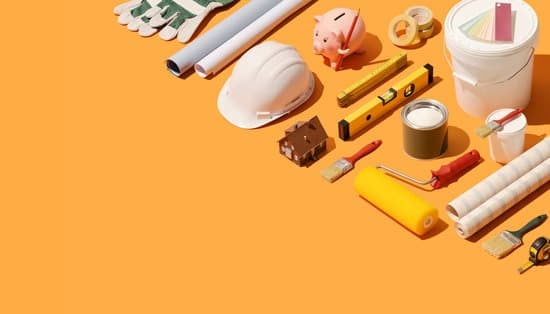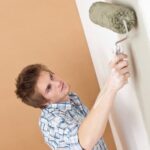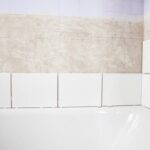Are you looking to learn how to improve mobile home walls? Whether you are a homeowner or a tenant, it is essential to understand the importance of maintaining and enhancing the walls of your mobile home.
This article will provide insights on different types of mobile home walls, common issues that arise, and tips for improving them. From addressing moisture problems to maximizing energy efficiency, this comprehensive guide will equip you with the knowledge needed to ensure your mobile home walls are in optimal condition.
The first step in enhancing your mobile home walls is to identify the different materials used. Understanding the composition of your walls will help in determining the best approach for improvement. Whether it’s vinyl, drywall, or wood paneling, each material has its own set of challenges and solutions when it comes to enhancement.
Moisture, insulation, and structural integrity are common issues that plague mobile home walls. These problems can lead to a host of issues such as mold growth, energy inefficiency, and safety concerns. Thus, it is crucial to address these issues effectively in order to improve the overall quality of the walls. In the following sections, we will delve into DIY solutions as well as seeking professional assistance for resolving these issues.
Types of Mobile Home Walls
Mobile home walls can be made from a variety of materials, each with its own set of advantages and disadvantages. It’s important to understand the different types of walls used in mobile homes to determine the best approach for improvement or repair.
Here are some common materials used in mobile home walls:
- Drywall: Many mobile homes use drywall for their interior walls. While relatively easy to work with, drywall is susceptible to damage from moisture and may not provide the best insulation.
- Vinyl-covered drywall: Some mobile homes feature vinyl-covered drywall, which provides a more durable and washable surface compared to traditional drywall.
- Wood paneling: Wood paneling was popular in older mobile homes and can give a rustic look. However, it may require regular maintenance to prevent warping or other damage.
- Fiberglass reinforced panels (FRP): FRP is a durable and moisture-resistant option often used in wet areas like bathrooms and kitchens.
- VOG panels: Vinyl-over-gypsum (VOG) panels are a common material used in manufactured homes that provides a clean, finished look.
Understanding the type of walls in your mobile home will help you make informed decisions when it comes to improving their appearance, durability, and energy efficiency. Whether you’re looking to upgrade the aesthetic appeal or address structural issues, knowing the materials involved is an essential first step.
Common Issues With Mobile Home Walls
Moisture, insulation, and structural integrity are three common issues that mobile home owners may encounter when it comes to their walls. Addressing these issues is crucial for maintaining the overall quality and safety of the mobile home.
Moisture Problems
Moisture can be a major issue in mobile home walls, leading to mold growth, rotting wood, and potential health hazards for residents. Common causes of moisture problems include leaks in the plumbing, roof, or windows, as well as poor ventilation. To address moisture issues, it is important to regularly inspect the home for signs of water damage and promptly fix any leaks. Additionally, installing proper ventilation systems such as exhaust fans can help reduce humidity levels inside the home.
Insulation Challenges
Many older mobile homes suffer from poor insulation, leading to energy inefficiency and discomfort for residents. Upgrading insulation in walls can greatly improve the overall energy efficiency of a mobile home and reduce heating and cooling costs. Options for improving insulation include adding foam board insulation or fiberglass batts to existing walls or replacing old siding with insulated panels.
Structural Integrity Concerns
Maintaining the structural integrity of mobile home walls is essential for ensuring the safety of occupants. Over time, factors such as settling, moisture damage, and wear and tear can compromise the strength of the walls. It’s important to regularly inspect the walls for signs of damage or deterioration, such as cracks or bulges. If structural issues are identified, it is best to seek professional assistance to reinforce and stabilize the walls to prevent further damage.
By addressing these common issues with mobile home walls-moisture problems, insulation challenges, and structural integrity concerns-homeowners can ensure a safer and more comfortable living environment while also increasing the overall value of their property.
Tips for Improving Mobile Home Walls
Improving the walls of a mobile home is crucial for maintaining its structural integrity, energy efficiency, and overall aesthetic appeal. Whether you’re looking to address moisture issues, enhance insulation, or simply update the interior design, there are various DIY solutions and professional assistance available. By understanding the different materials used in mobile home walls and identifying common issues, you can take the necessary steps to improve your mobile home walls.
One of the first tips for improving mobile home walls is to consider DIY solutions such as resealing windows and doors to prevent moisture from entering the walls. Additionally, adding weather stripping and caulking can help improve insulation, reducing energy costs. For those who are not confident in their DIY skills, seeking professional assistance can be beneficial. Professional contractors can identify any structural issues and provide expert solutions for reinforcing the integrity of mobile home walls.
Another important aspect of improving mobile home walls is choosing the right insulation. Options such as foam board insulation, fiberglass batts, or blown-in insulation can maximize energy efficiency and comfort within your mobile home. Furthermore, repairing water damage caused by leaks or moisture problems is essential for maintaining the longevity of your walls. By addressing these issues promptly and effectively, you can prevent further damage and ensure a safe living environment for yourself and your family.
Choosing the Right Insulation
When it comes to improving mobile home walls, choosing the right insulation is crucial for maximizing energy efficiency. Proper insulation not only helps to lower energy bills but also ensures that the interior of the home remains comfortable regardless of the weather outside. There are various options available for mobile home insulation, each with its own advantages and considerations.
One popular option for mobile home insulation is fiberglass batts, which are made of tiny glass fibers and are easy to install. Another effective choice is rigid foam insulation, known for its high insulating value and moisture resistance.
Spray foam insulation is another option that provides excellent coverage and can help seal any air leaks in the walls. Additionally, blown-in cellulose insulation is a sustainable choice that is made from recycled paper and can be installed without causing much disruption to the interior of the home.
Properly installed insulation not only helps in reducing energy costs but also contributes to a more sustainable living environment. Understanding the different types of insulation options available and their respective benefits can help mobile homeowners make an informed decision based on their specific needs and budget constraints.
| Insulation Type | Advantages |
|---|---|
| Fiberglass Batts | Easy to install |
| Rigid Foam Insulation | High insulating value and moisture resistance |
| Spray Foam Insulation | Excellent coverage and sealing of air leaks |
| Blown-In Cellulose Insulation | Sustainable choice made from recycled materials |
Repairing Water Damage
Mobile homes are susceptible to water damage due to their construction and susceptibility to leaks. The first step in addressing water damage is to identify the source of the leak. Common culprits include damaged roofing, plumbing issues, or poorly sealed windows and doors. Once the source of the leak is identified, it’s essential to fix it as soon as possible to prevent further damage.
After fixing the source of the leak, the next step is to address any existing water damage. This may include replacing damaged drywall, insulation, or flooring. It’s crucial to ensure that all affected areas are thoroughly dried to prevent mold and mildew growth. Using dehumidifiers and fans can help expedite the drying process.
In addition to repairing visible water damage, it’s important to take preventative measures to avoid future issues. This may involve resealing windows and doors, applying protective coatings to the roof, and regularly inspecting plumbing for any signs of leaks or corrosion.
| Steps for Repairing Water Damage | Importance |
|---|---|
| Identify source of leak | Prevents further damage |
| Fix source of leak | Prevents future issues |
| Address existing water damage | Prevents mold growth |
| Take preventative measures | Avoid future problems |
Reinforcing Structural Integrity
Assessing the Current State of the Walls
Before reinforcing the structural integrity of your mobile home walls, it is important to assess their current state. Look for any signs of damage such as cracks, warping, or bowing. This will help you determine the extent of reinforcement needed to ensure durability and safety.
Consider Adding Support Beams
One effective way to reinforce mobile home walls is by adding support beams. These can be installed vertically or horizontally to provide additional strength and stability to the overall structure. Consider hiring a professional contractor to assess your specific needs and recommend the best approach for adding support beams.
Exploring External Wall Bracing Options
External wall bracing can also be an effective solution for strengthening mobile home walls. This involves installing braces on the exterior of the walls to prevent movement and improve structural stability. Consult with a qualified contractor to determine if external wall bracing is suitable for your mobile home and to ensure compliance with local building codes.
By taking proactive steps to reinforce the structural integrity of your mobile home walls, you can enhance their durability and safety. Whether it’s adding support beams, exploring external wall bracing options, or seeking professional assistance, prioritizing this aspect of improvement can contribute significantly to the overall comfort and value of your mobile home.
Revamping Interior Design
When it comes to improving the aesthetics of mobile home walls, there are several creative ideas that can enhance the overall look and feel of the space. Whether you’re looking to add a personal touch or simply refresh the interior design, here are some creative strategies to consider:
1. Statement Wall: Create a focal point in your living space by designating one wall as a “statement wall.” This can be achieved through various methods such as applying bold wallpaper, using a different paint color, or installing decorative paneling. By drawing attention to this particular wall, you can instantly elevate the visual appeal of the room.
2. Gallery Wall: Embrace your creative side by curating a gallery wall filled with artwork, photographs, and other visually appealing elements. This is an excellent way to showcase your personal style and add character to your mobile home walls. Mix and match different frame sizes and styles for an eclectic yet harmonious display.
3. Textured Finishes: Experiment with textured finishes such as Venetian plaster, exposed brick, or wood paneling to add depth and dimension to your walls. These tactile surfaces not only bring visual interest but also contribute to a cozy and inviting atmosphere within your mobile home.
By implementing these creative ideas, you can transform the look of your mobile home walls and create a personalized and visually stunning living space that reflects your unique taste and style. Whether you choose to tackle these projects on your own or seek professional assistance, enhancing the aesthetics of your mobile home walls can significantly impact the overall comfort and value of your property.
Conclusion
In conclusion, improving the walls of a mobile home is essential in ensuring overall comfort and increasing property value. By understanding the different types of materials used in mobile home walls and addressing common issues such as moisture, insulation, and structural integrity, homeowners can take steps to make their living space more comfortable and energy-efficient.
Whether using DIY solutions or seeking professional assistance, there are various tips for improving mobile home walls that can lead to significant improvements. Choosing the right insulation can maximize energy efficiency, while repairing water damage and reinforcing structural integrity are crucial for durability and safety. Additionally, revamping the interior design can enhance the aesthetics of mobile home walls, making them more visually appealing.
Ultimately, the impact of improved mobile home walls goes beyond just appearances. It directly affects the overall comfort and quality of life for residents while also adding value to the property. Therefore, homeowners should consider investing time and resources into upgrading their mobile home walls to create a more enjoyable living environment and potentially increase resale value in the future.
Frequently Asked Questions
Can You Replace Mobile Home Walls With Drywall?
Yes, you can replace mobile home walls with drywall. This process involves removing the existing wall panels, adding insulation if necessary, and then installing drywall in their place. It’s important to ensure that the structure of the mobile home can support the weight of the drywall and to follow any specific building codes or regulations regarding mobile home renovations.
What Can You Use on Walls in a Mobile Home?
There are several options for walls in a mobile home, including painting or wallpapering over the existing panels, adding beadboard or wainscoting for a decorative touch, or even using peel-and-stick wall tiles for a modern look.
Some homeowners may choose to keep the original wall panels if they are in good condition and instead focus on other ways to enhance the overall aesthetic of their mobile home.
How Can I Improve the Look of My Mobile Home?
You can improve the look of your mobile home in various ways, such as updating fixtures and hardware, replacing flooring, adding window treatments or curtains, investing in new furniture or decor, and incorporating storage solutions to reduce clutter. Additionally, making small upgrades to the kitchen or bathroom can have a big impact on the overall appearance of your mobile home.
Finally, keeping up with regular maintenance and repairs will not only improve its look but also increase its longevity.

I’m thrilled to have you here as a part of the Remodeling Top community. This is where my journey as an architect and remodeling enthusiast intersects with your passion for transforming houses into dream homes.





